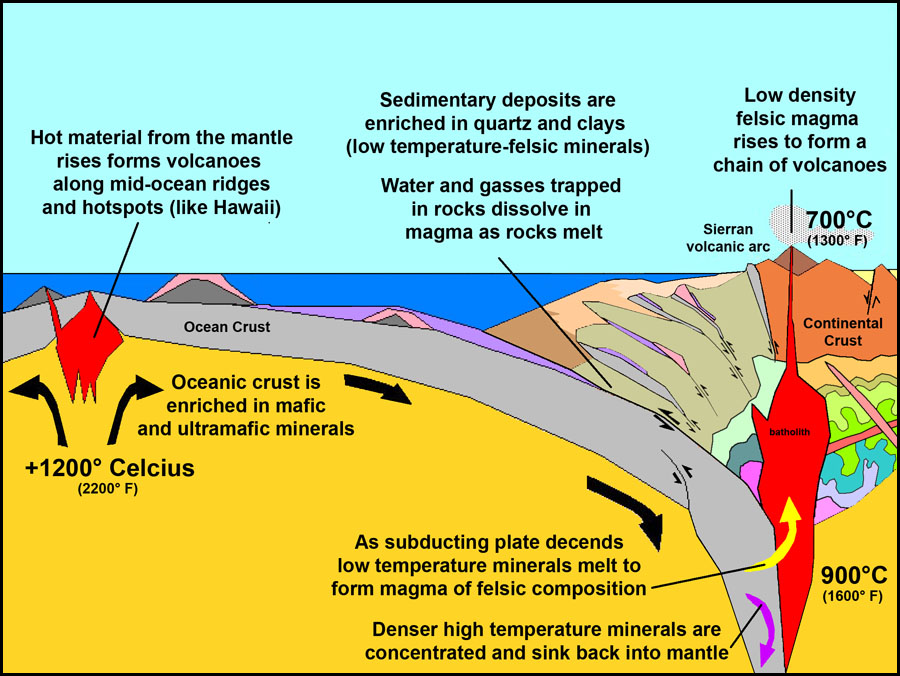Why are silicate minerals (e.g. quartz and feldspar) so abundant in the Earth's crust?
1 Answer
Part of the mineral differential process that has gone on since the Earth formed some 4.56 billion years ago.
Explanation:
When the Earth formed, the heaviest elements like iron and nickel slowly sunk to the core by density differentiation. Less dense elements formed the mantel and in particular, the mineral peridotite crystallized out. Molten peridotite that broke through to the surface recrystallized to basalt which is less dense than peridotite.
 As basalt was heated and subjected back into the mantel, it again went through partial melting in the upper mantel wherein lighter minerals like quartz and feldspars became predominate in the melt. Being less dense that basalt, they eventually worked their way up to the surface again as granitic intrusions. Granites came to be one of the main constitutes of the continents which are floating on oceanic basaltic crust.
As basalt was heated and subjected back into the mantel, it again went through partial melting in the upper mantel wherein lighter minerals like quartz and feldspars became predominate in the melt. Being less dense that basalt, they eventually worked their way up to the surface again as granitic intrusions. Granites came to be one of the main constitutes of the continents which are floating on oceanic basaltic crust.

